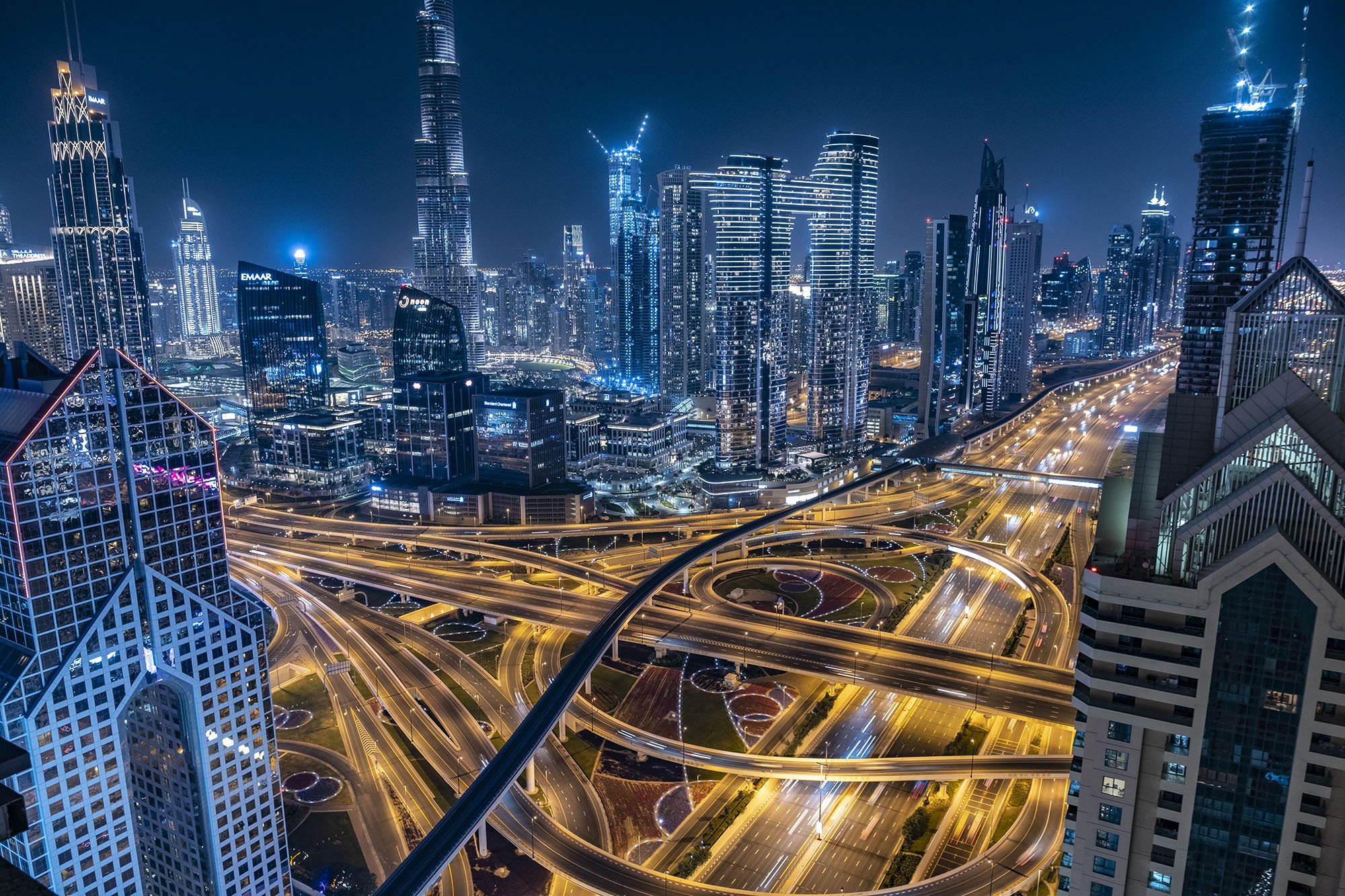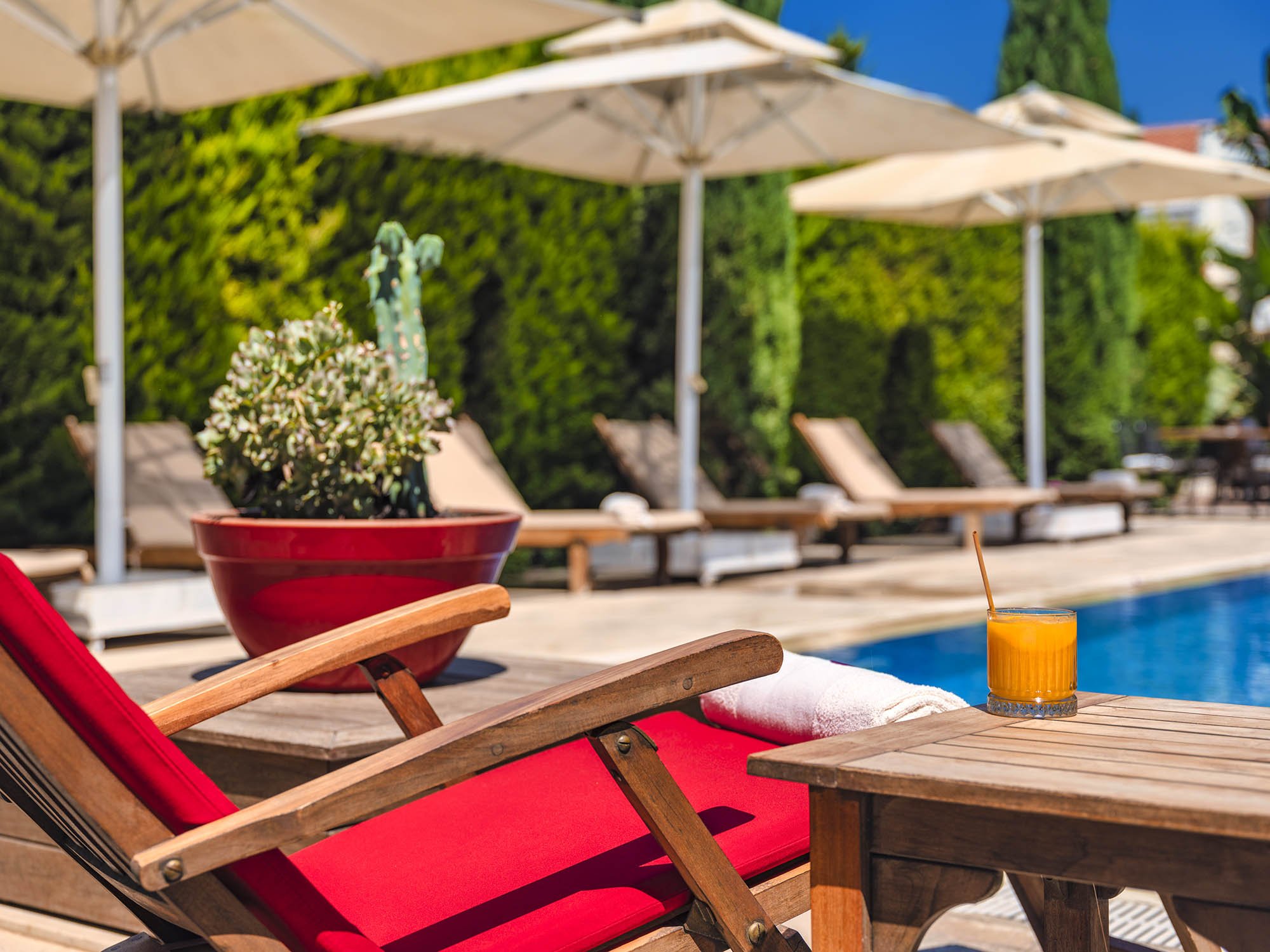Photography exhibitions. Legendary, world-renowned photographers. Industry experts. Presentations. Film screenings. Workshops. Book signings. Focus groups. Competitions. Latest camera gear & Trade show. Xposure International Photography Festival in Sharjah, UAE is unlike any other and if you care about photography even a tiny bit, you can’t afford to miss it.
Read MoreBLOG
Join me on a journey through the world of photography. My blog covers a range of topics including camera gear reviews, behind-the-scenes of commissioned projects, workshop recaps, and general thoughts on a variety of photography subjects. Follow along as I share my passion for the art and craft of photography.
Lens on AI: The Controversial Impact of Artificial Intelligence on Photography
AI is inevitable
A couple of years ago, hardly anyone spoke of artificial intelligence. Today, all we read, hear, and speak about is artificial intelligence. It seems as if AI suddenly sprang out of nowhere and pounced on us from all sides. That is untrue, of course; AI has been under development for many years, but recent technological advances have made it the dominant focus of all conversations. And also with good reason.
The best chess player in the world will always lose to the AI. Expert AI systems can forecast the weather more accurately than any human meteorologist. The AI is already more accurate than any seasoned physician at making health diagnoses. The majority of automated administrative duties are performed by AI more effectively than the conventional, human method. It's impossible to discuss AI without being concerned about the future of the topic and our place in it. We require strong tools that enable us to complete the task more quickly, effectively, precisely, and affordably. After all, industrialization is what made humankind's unparalleled advancement possible over the previous 250 years. However, we are getting to the point where the AI will soon no longer act as our sidekick or assistant.
Right now, getting replaced is a hot topic. Are this civilization and the entire global economic system prepared to hand over the controls to the AI while we... What precisely is our place and function in the AI-run society? I’d love to hear a concise explanation which makes sense. I have not found one yet. Automation with the aid of AI - that’s one thing. Replacing humans with the same technology. Now that is a completely different matter.
I'm a creative. I can't worry about AI assuming global dominance. It exceeds the scope of my concerns. However, I have some questions for my artistic peers who believe that the AI-generated art “belongs” to them because it popped up on their screens after typing a sentence full of colourful verbs and adjectives, The soulless machine, the robot which was programmed to run a code based on creations of millions of human artists found online was most definitely NOT "bent to their will." It merely ran an executable software code. You just pressed the ENTER button.
I get it; It is inevitable that AI will arrive and stay because people love to find shortcuts in life. Sadly, this also applies to art. But we better be careful about this. My suggestion is that we design the AI in way it will work with us and for us, not than instead of us. The moment we stop inventing, producing, creating, is the moment we become extinct. We should never stop to be curious. The ability to produce art in all shapes and forms from music, poetry to paintings and sculptures is easily the most defining and important human trait. If we lose our gift to create art, we will lose everything that makes us human. It may not even matter if we wake up one day and find ourselves bent to the will of the AI.
Please read my friend Rob Wilson's outstanding article published in the Frames Magazine on the subject, titled LOOK CLOSER: “AI – Machines Rising to which he invited me to add my opinions.
Liked this blog post? Please subscribe to my mailing list and keep updated with my new content which may be interesting to you. Keep creating!
From Snooze to Wow: How Time-Lapse Transforms the Ordinary into the Extraordinary
there are many REASONS
why time-lapses look better than regular video and this difference is particularly apparent at night, in the city. Let me explain why.
DEFINITIONS AND BENEFITS OF TIME-LAPSE CINEMATOGRAPHY
There are several reasons why a time-lapse video of a city at night deals a heavier punch than a standard video of the same subject. One of the key explanations is the fact that a time-lapse can capture a longer period of time in a compressed format, which can produce a sense of movement and change that is not as obvious in a standard video.
A time-lapse allows a larger range of motion and activity, including shifting traffic patterns, people moving through the streets, and changing illumination of buildings and landmarks. For the viewer, this may result in a more varied, dynamic and compelling visual experience that is difficult to capture and replicate with a video camera.
Time-lapses taken at night often outperform traditional videos because they can catch how the light changes throughout the day. A regular video clip will often have consistent illumination from start to finish. As dusk approaches and city lights come on, the illumination will change in a time-lapse, and that is one of the reasons why time-lapses rarely fail to impress.
but that’s just half of it!
Wider apertures and longer exposure periods are frequently used to capture time-lapses. This makes it possible to capture more light, which produces brighter photographs. Nighttime time-lapses of the city also appear more vivid since they frequently contain a broader variety of light sources. Last but not least, time-lapses are captured as a series of high-resolution, 16-bit RAW still photographs with a superior dynamic range and little noise. As a result, the artists enjoy the advantages of creative freedom. Their time-lapses suffer very little loss in image quality when using post-processing techniques.
In conclusion, time-lapse films have the ability to render the mundane world around us with crystal clarity, as a spectacle of dancing, vibrant lights. Time-lapses are exciting. Regular video on the other hand? Not so much.
Here’s a comparison of two still frames. On the left side is a frame extracted from a time-lapse sequence. On the right, a frame from a regular video. What is instantly apparent is how much brighter the time-lapse image appears. There are no black zones in the image where you can’t make out the detail. The colours are punchy, vivid and varied across the frame. Every type of light source has a distinct quality and tone. Cars have lovely motion streaks. The whole time-lapse scene appears alive, compelling and inviting.
The frame on the right side was extracted from regular video. It appears, well, regular. It’s mostly dark and quite dull. Video lacks the dynamic range to resolve the details in the dark areas of the image. There’s a very little variety when it comes to colours. The image is mostly yellow. There’s no real sense of motion or life. It’s kind of forgettable.
The difference between the two ways of shooting and featuring a scene is not subtle at all. The video footage captured with Fujifilm X-T3 is nice, don’t get me wrong. But it’s not exciting or special. On the other hand, motion-controlled time-lapse shot with the Fujifilm GFX100 is lively scene, combining an explosion of colours and a choreographed dance of cars and construction cranes. Time-lapse and regular videos are two different worlds, galaxies apart.
Time-lapse film featuring vistas of Dubai, captured from the penthouse on the 42nd floor of ‘Avani Palm View Dubai’ hotel and residence.
I hope you found this blog post useful, even enlightening. Owing to the advent of digital photography, time-lapse cinematography is one of the most exciting, niche filming techniques to have emerged in the past 15 years. But we all know how fast the technology is moving forward. It’s only going to get better form this point onward.
Do leave your comment below and please subscribe to my monthly newsletter. I promise not to spam you! :)
THE SHOOT AT BEY EVI BOUTIQUE HOTEL IN TURKEY
Alaçati, THE HIDDEN gem by the aegean sea
Many are praising this charming little city by the sea. I went there to see why.
BRIEF HISTORY of Alaçati
Alaçati, unlike most of the towns in the area, doesn't have a long history. If you come to the city to find the signs of the past Emperors and conquests, of the kings and palaces, you will be disappointed. The wonderful old structures that are frequently associated with the area are not present here. Instead, you have a community with a calm, muted heritage that matches the atmosphere it so willingly provides.
Early in the 19th century is when Alaçati first appeared. Earthquakes on the neighboring island of Chios have ruined the homes and way of life of the Greek families occupying the area. A well-known Turkish family was also hiring workers to work on their vineyards and olive farms at the same time. They approached the Greek families in the area, who drained the swamp to create a community.
Alaçati was the name given to the worker's town, a traditional Greek village with stone buildings and cobblestone streets. The town developed into a significant commerce hub as the nearby vineyards provided good wine, and it kept expanding until after the Balkan war in 1914.
According to the terms of the Treaty of Lausanne, which was signed in 1923, Muslims who had fled Crete, Thrace, Macedonia, and the Dodecanese moved in Alatsata city in the Greeks' abandoned homes. The majority of these homes are still standing in Alaçati as tourist attractions.
WHO LIVES THERE?
Turkish wealthy and celebrities are increasingly flocking to Alaçati as a substitute for the Bodrum scene. Over the years, Bodrum has been extensively explored; Alaçati is another small, upscale resort. Less than 10,000 people call Alaçati home permanently, but during the height of the summer, that number can increase by a factor of ten. 90% of the population is Turkish in general. Although there are not many foreigners here yet, they are gradually beginning to become aware of it. High society from both Izmir and Istanbul is represented.
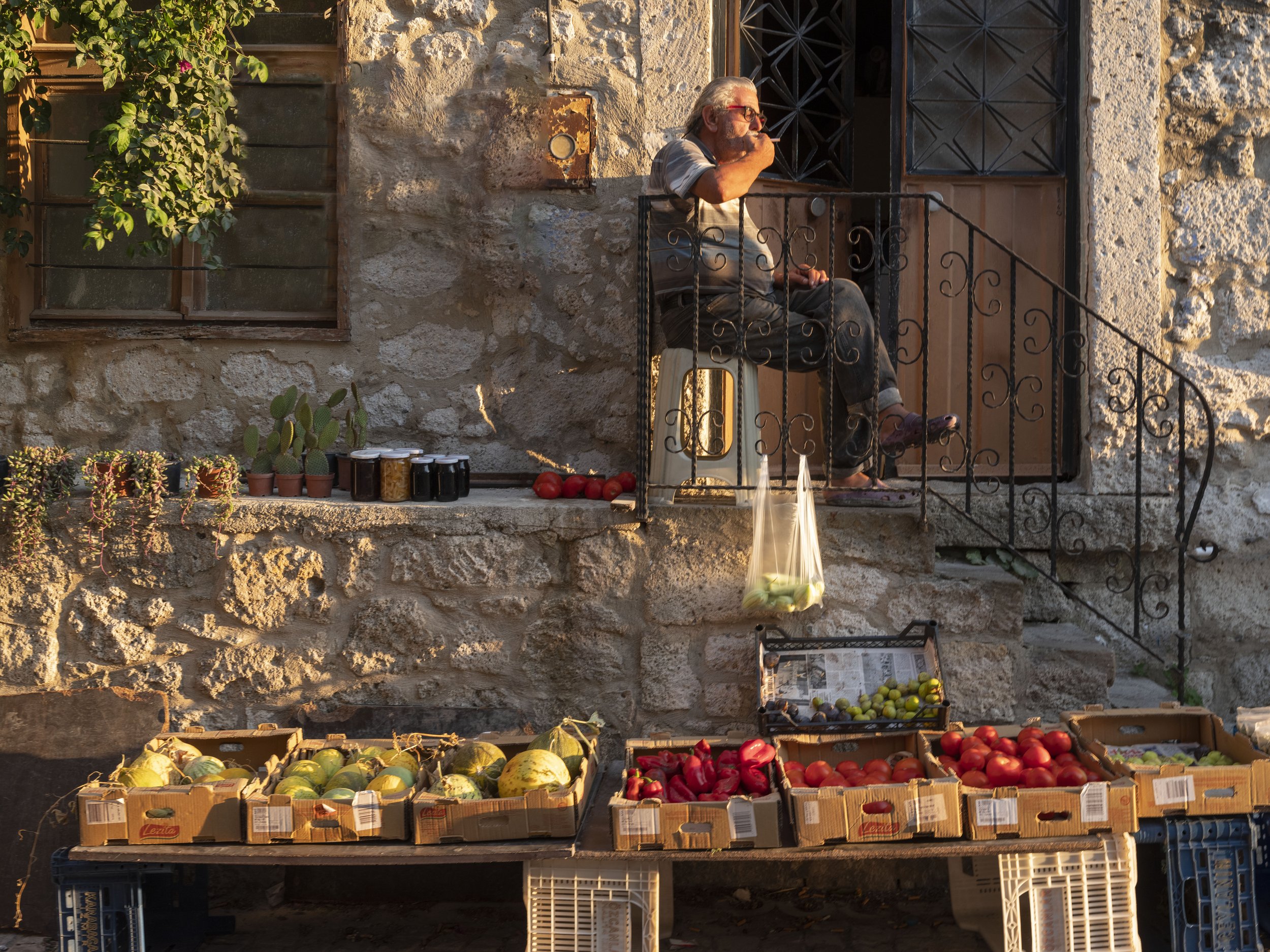
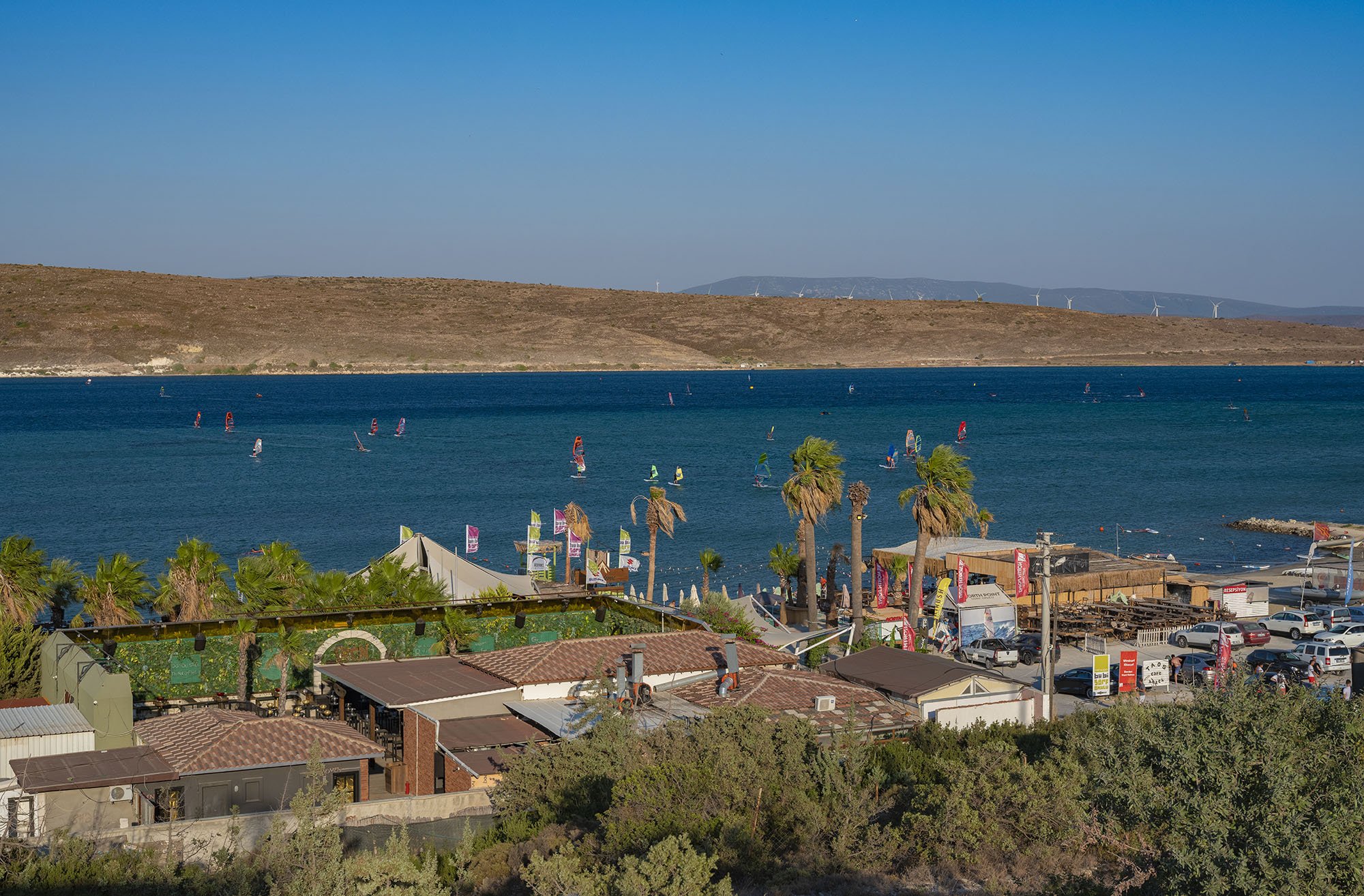
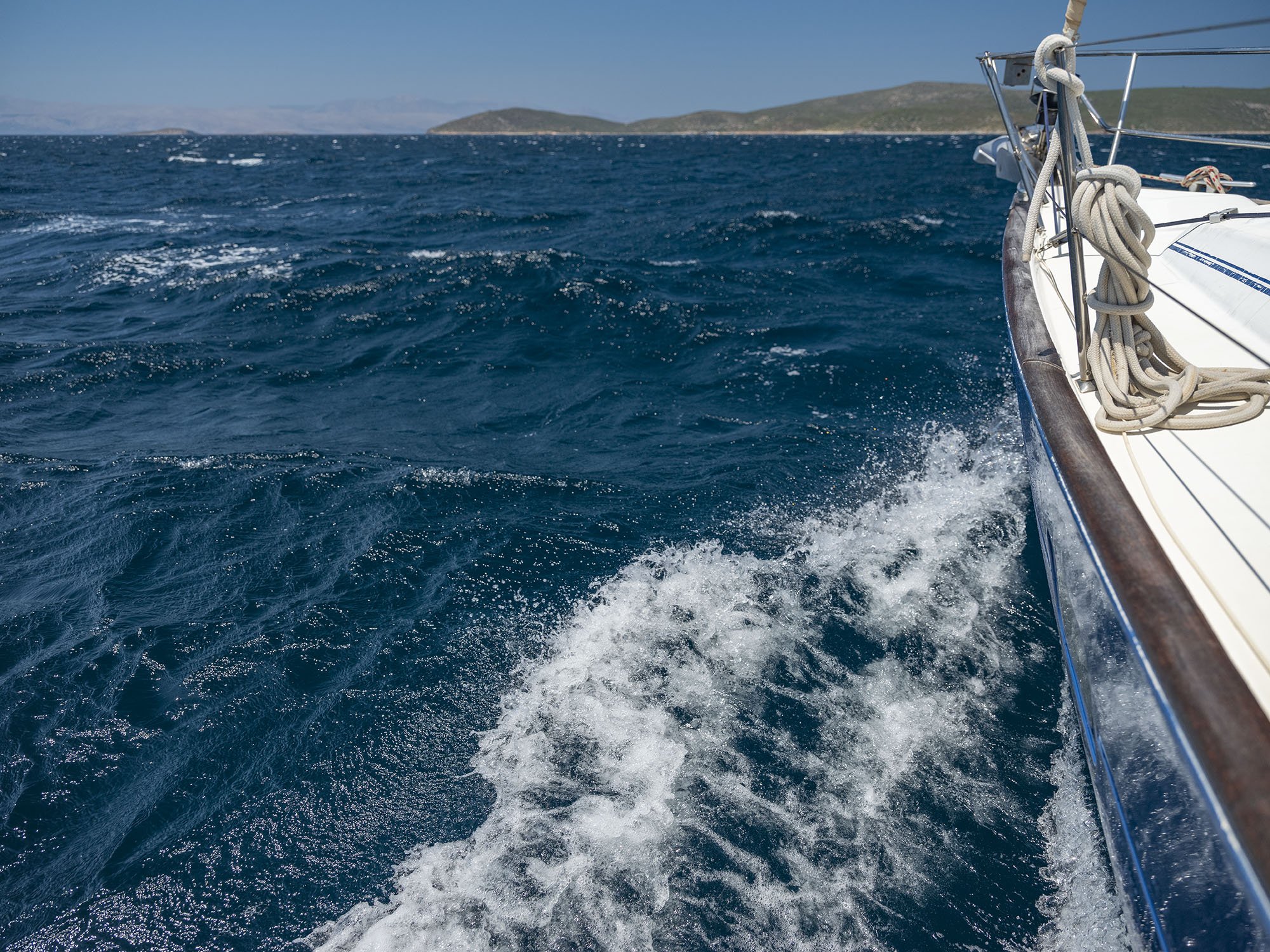
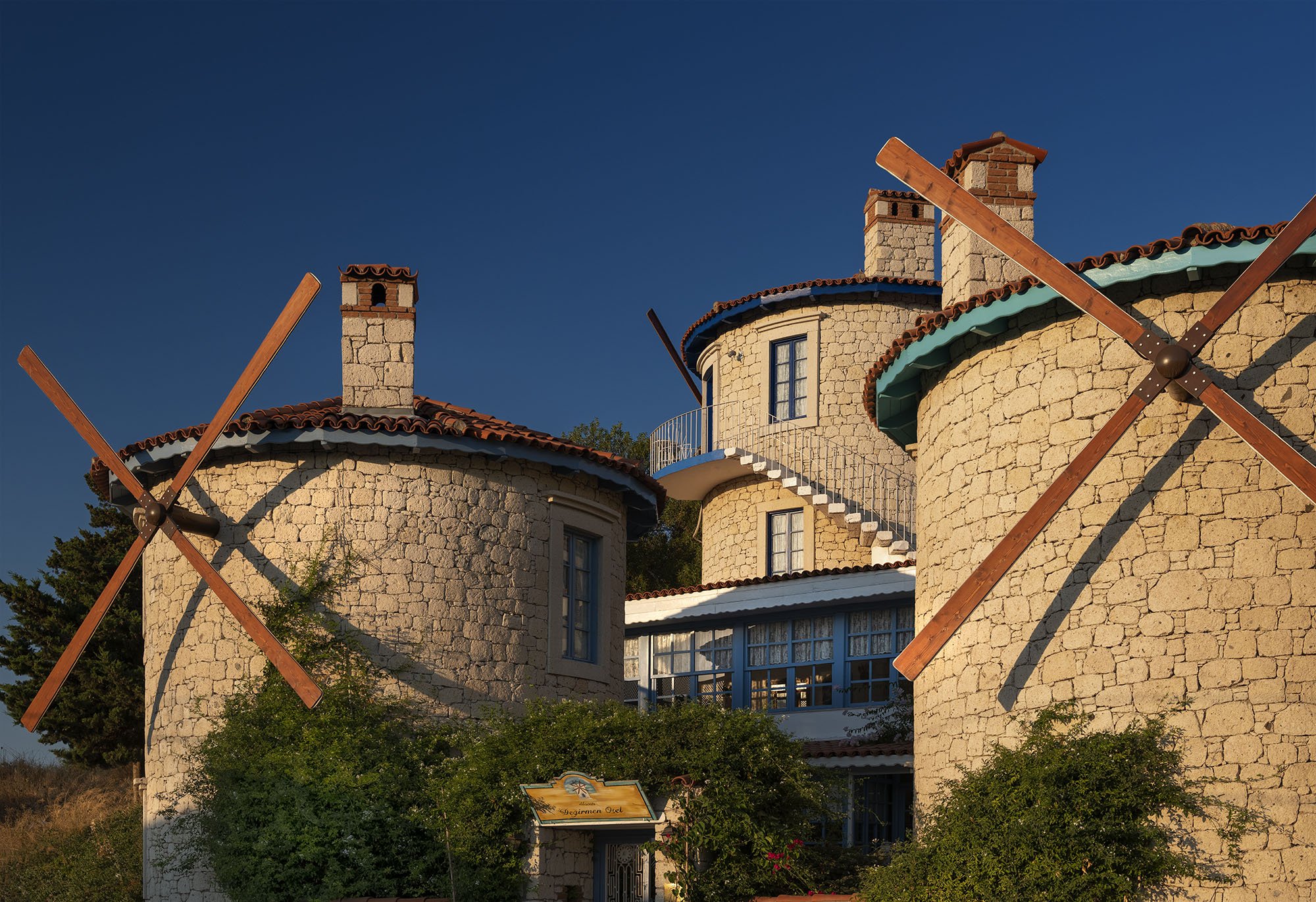
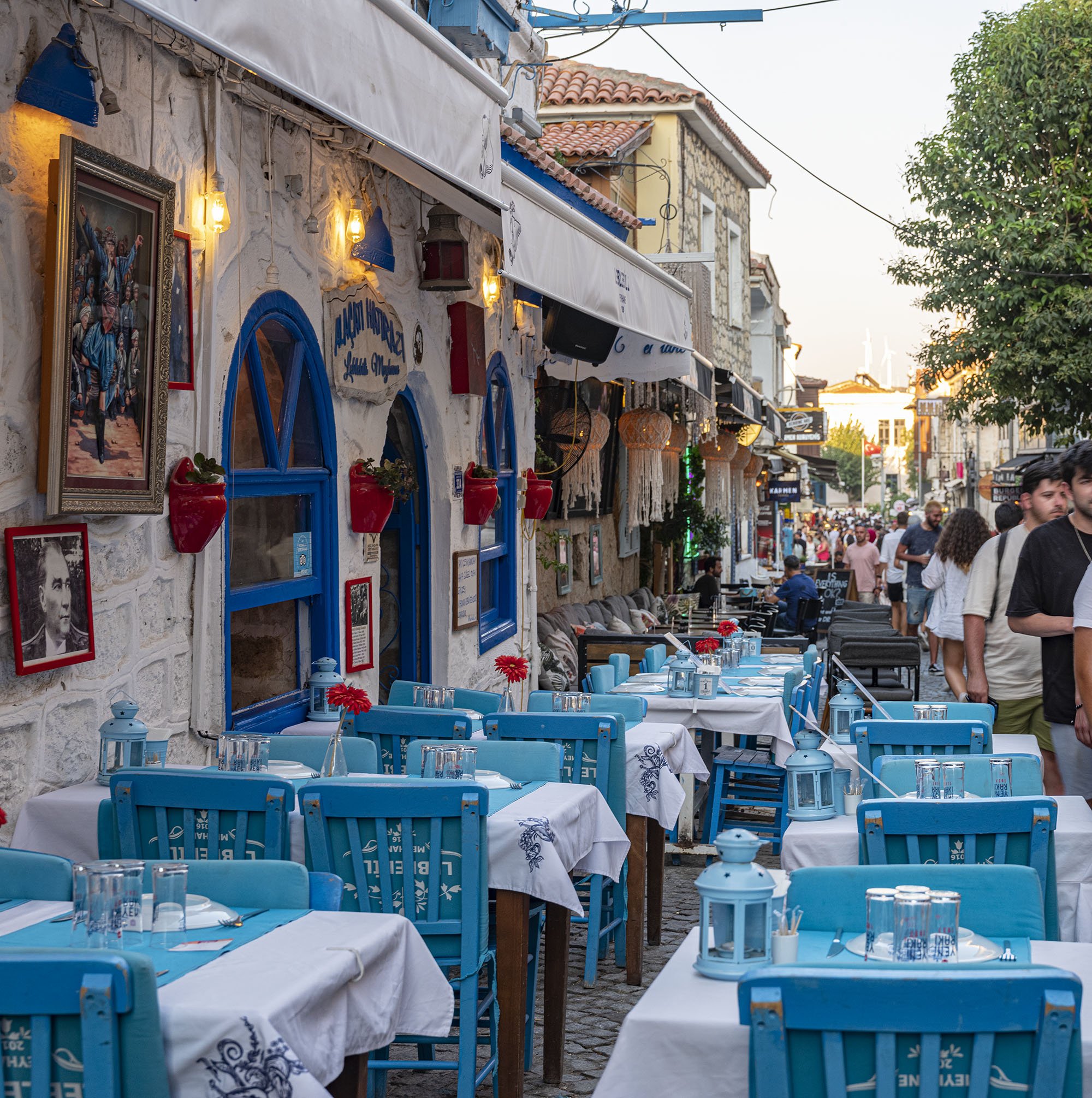
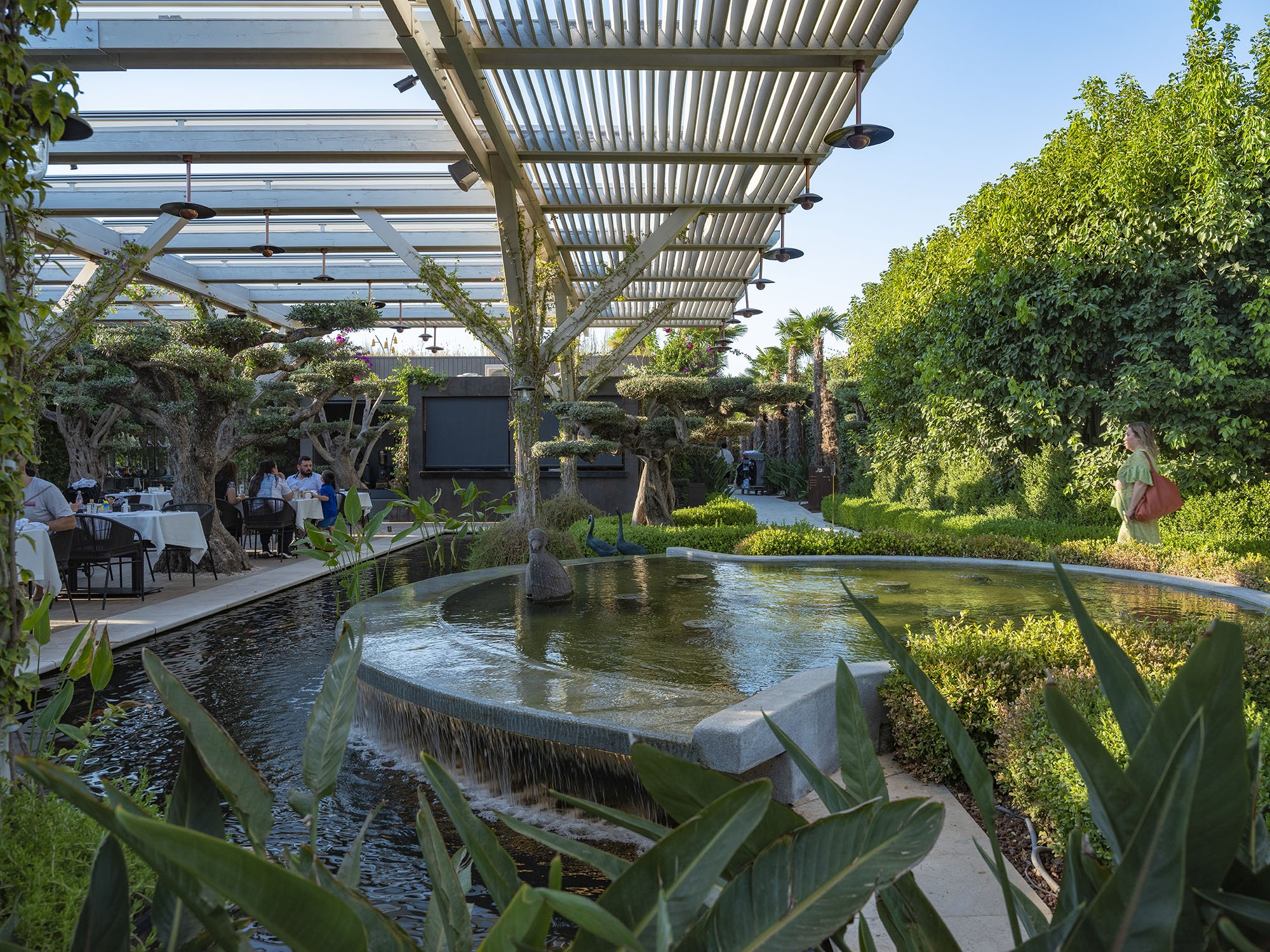
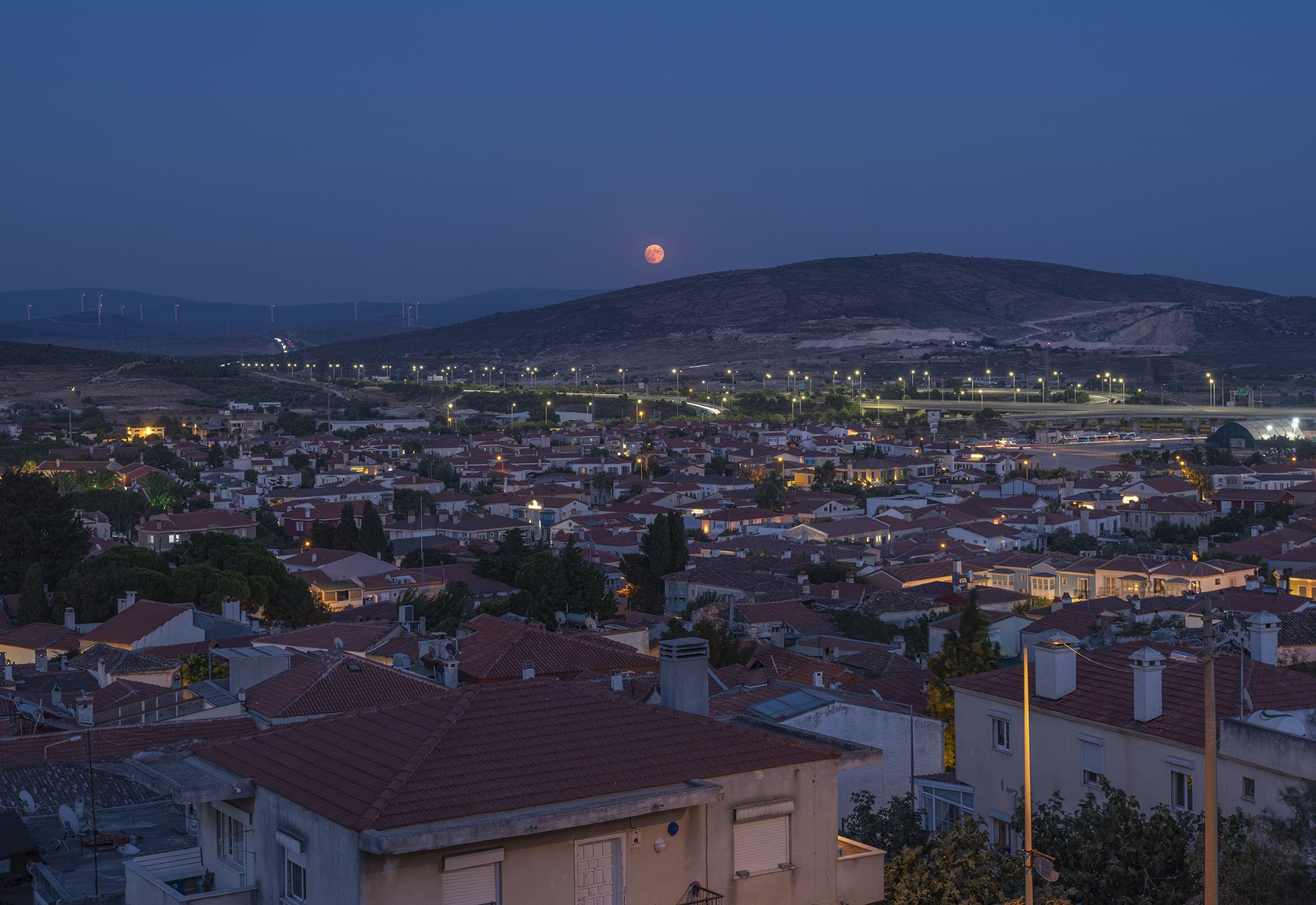
THE ARCHITECTURE
Stone homes with colored windows and pavement line the tiny lanes of Alaçati. Houses from the Ottoman era may be found in the city center of Alaçati; the ones that belonged to Ottoman Greeks can be identified by having an additional covered balcony area, known in Turkish as a cumba. Usually, lilac or light blue hues are used to paint enclosed cumba balconies. In 2005, the town was designated as a historical site, and the structures are now well-protected. The recently constructed homes make reference to the earlier architectural designs of the Ottoman homes in Alaçati's agora.
Today, most of the stone house have been converted into boutique hotels. Since these houses are quite old, the renovation and conversion process in Alaçati is a perpetual, visible everywhere, across the city.
BEY EVI boutique hotel; MY SUBJECT
One of the best hotels in the city is the BEY EVI (translated Gentleman’s House). I was requested to take photos of one of the hotel's smaller guest rooms where the renovations had just been finished. The chamber was actually rather large, and its interior design reflected its exteriors with real antique furnishings purchased from the region. I aimed to capture the peaceful atmosphere in the coastal city and the rustic warmth of this cottage. The hotel, in my opinion, effortlessly incorporated native Alaçati characteristics into the textures and materials used throughout. I hope I was able to capture the essence of this charming tiny hotel and pride it brings to its enthusiastic owners.
I used a Fujifilm GFX50s medium format camera with Fujinon GF 32-64mm lens.
Hope you enjoyed this blog. Please subscribe to my mailing list so you don’t miss my new post and to keep track of my upcoming photography and time-lapse cinematography workshop!
THE WHY, AND HOW I SHOOT THE ARCHITECTURE (WITH AN EXAMPLE)
Professional architectural photography is the architecture's identical twin. The existence of architecture is meaningless unless it is seen and appreciated. The architecture's beauty, as well as its occasional ugliness, must be documented, acknowledged, marveled at, sometimes laughed at, and learned from.
Read More


